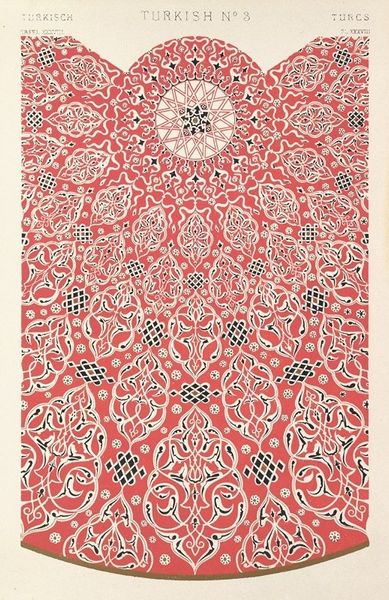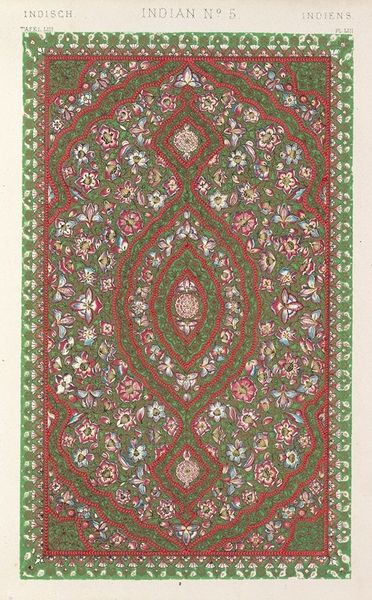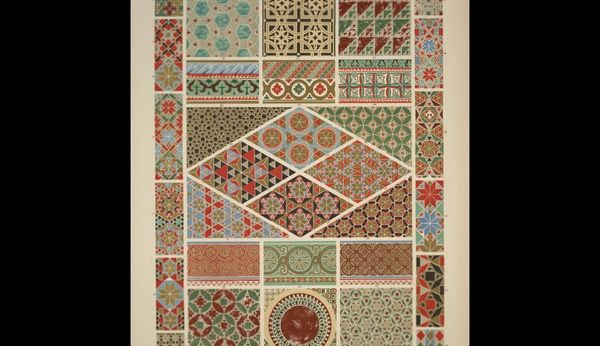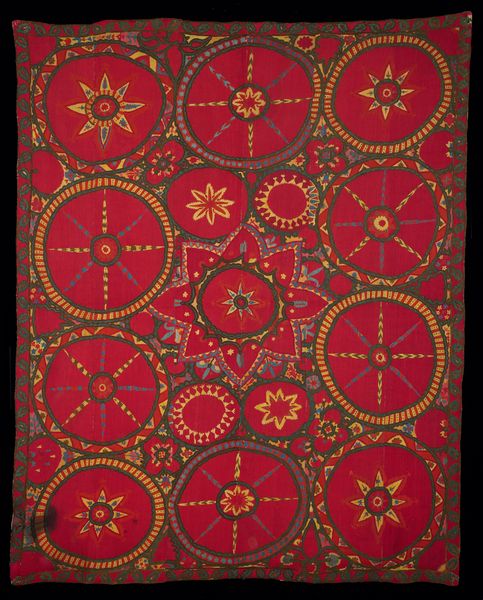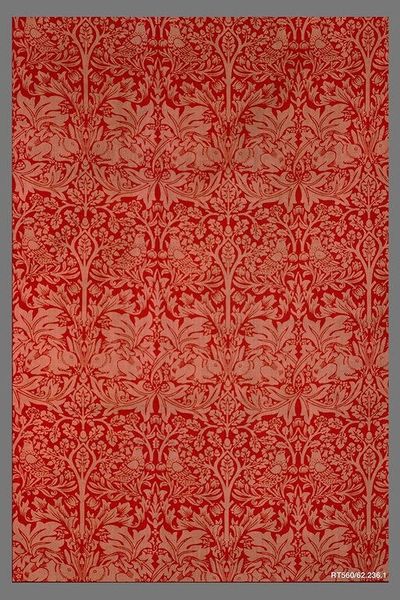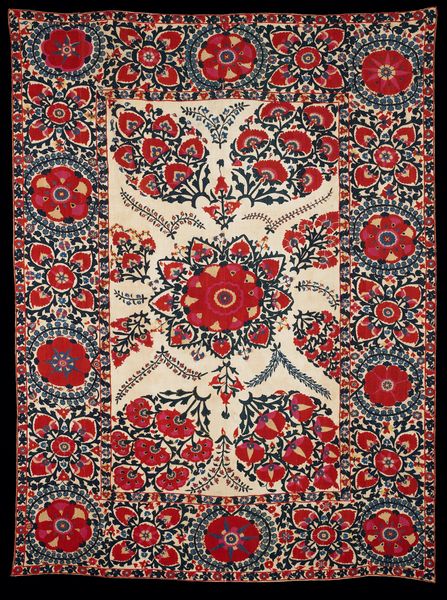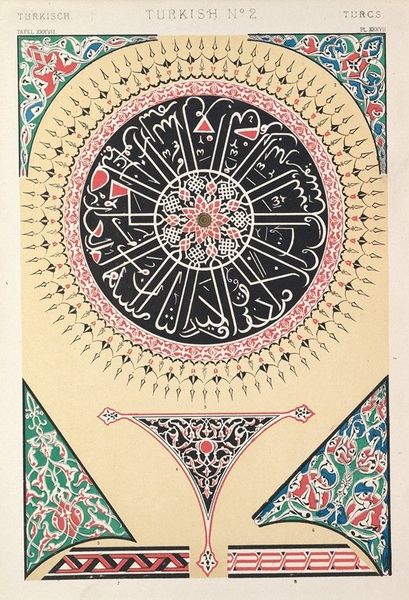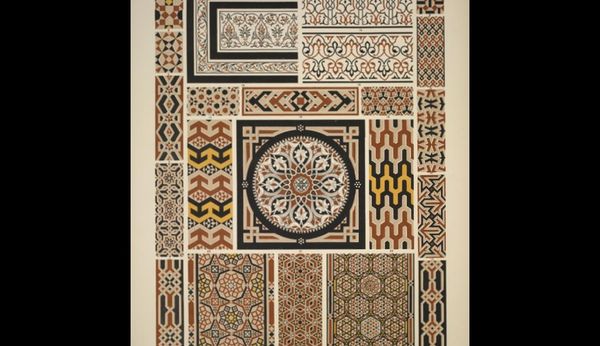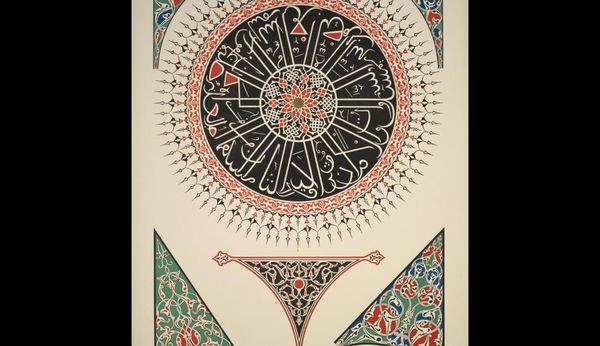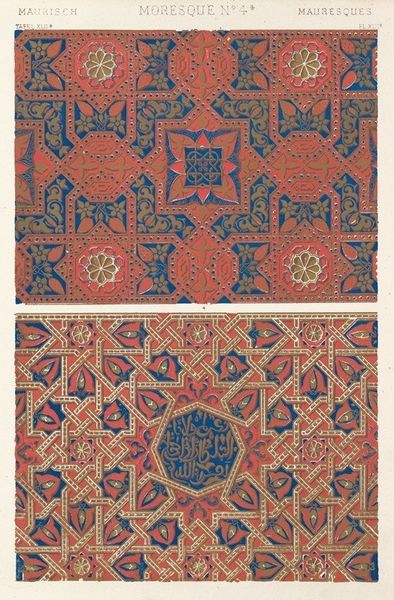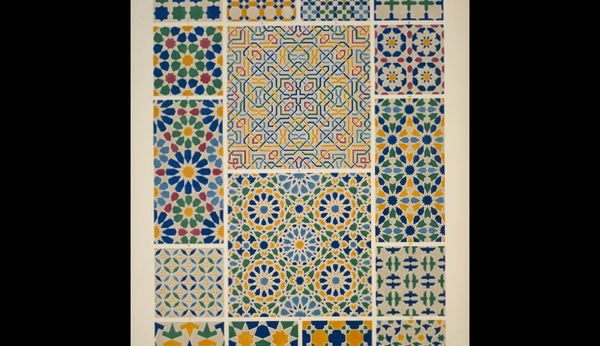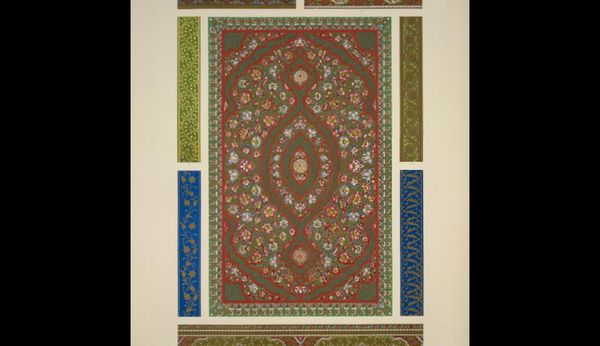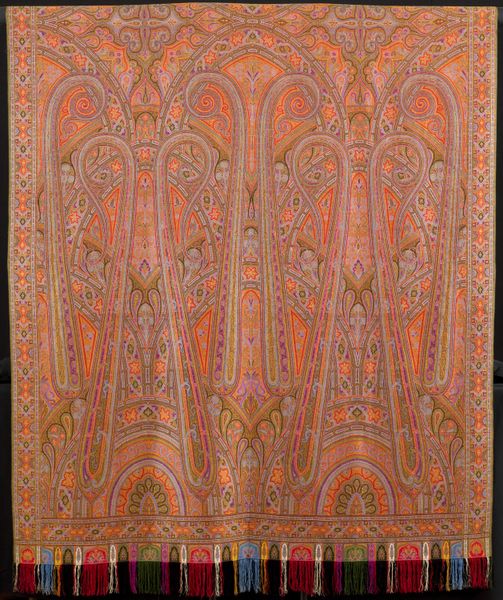
print, textile, mural
# print
#
pattern
#
textile
#
geometric pattern
#
organic pattern
#
geometric
#
islamic-art
#
decorative-art
#
mural
Copyright: Public domain
Owen Jones created "Turkish no. 3. Decoration of the dome of the tomb of Soliman I. in Constantinople" in the 19th century. Jones was a British architect and designer, known for his studies of Islamic ornamentation. Here, Jones meticulously reproduces the patterns from the tomb of Suleiman the Magnificent. The print embodies the Victorian era's fascination with the "Orient," yet it's also a product of British colonialism, where cultural artifacts were often extracted and reinterpreted through a Western lens. The geometric designs and arabesques, rendered in red, white, and black, reflect a deep understanding of Islamic art principles, emphasizing symmetry, rhythm, and the infinite. Jones sought to codify these design principles in his famous publication, "The Grammar of Ornament," revealing his belief in the universal appeal and applicability of Islamic design. But what does it mean to take the sacred patterns from a tomb and reproduce them for a different audience, a different purpose? This act walks a fine line between appreciation and appropriation, echoing broader questions about cultural exchange and power dynamics.
Comments
No comments
Be the first to comment and join the conversation on the ultimate creative platform.
